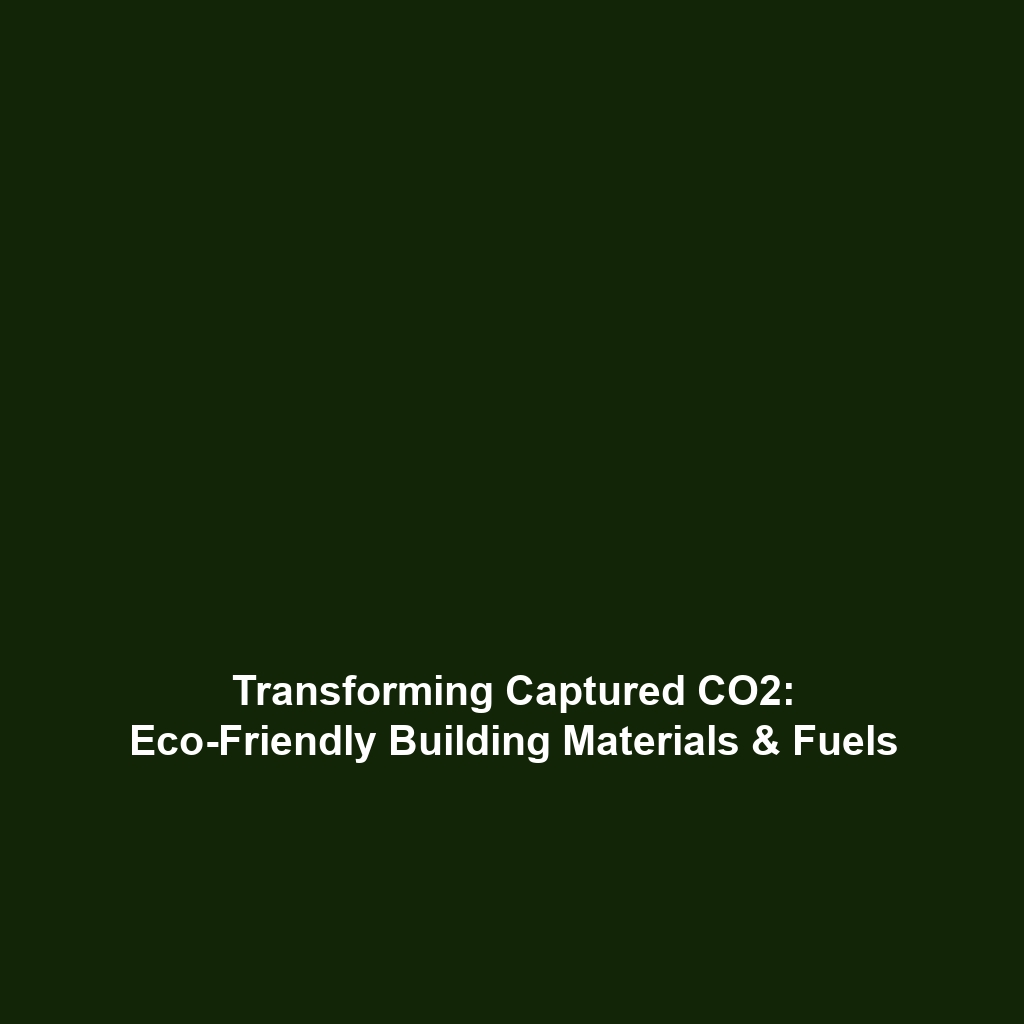Energy Demands of Carbon Capture & Storage (CCS) Processes
Introduction
Carbon Capture & Storage (CCS) is a vital technology aimed at reducing greenhouse gas emissions. However, CCS processes require significant energy for CO2 capture and compression, which can reduce the overall efficiency of power plants and industrial facilities. Understanding these energy demands is essential for enhancing the viability and implementation of CCS technologies. With global efforts to combat climate change intensifying, the role of efficient CCS systems becomes increasingly important in achieving sustainability targets.
Key Concepts
What is Carbon Capture & Storage (CCS)?
CCS involves the capture of carbon dioxide emissions from sources such as power plants and industrial processes before it reaches the atmosphere. The captured CO2 is then transported and stored underground in geological formations.
Energy Requirements
One major aspect of CCS is the energy-intensive nature of the CO2 capture and compression stages. Significant energy input is necessary for:
- Absorption techniques that use solvents to capture CO2.
- Compression processes that increase the pressure of captured CO2 for transport purposes.
- Separation technologies that enhance the efficiency of CO2 capture.
Applications and Real-World Uses
CCS processes requiring significant energy for CO2 capture and compression are being implemented in various sectors to reduce the carbon footprint. Key applications include:
- Power Generation: Fossil fuel power plants utilize CCS technology to capture emissions, thus contributing to cleaner energy production.
- Cement Manufacturing: This industry, a significant emitter of CO2, is using CCS to limit its environmental impact.
- Hydrogen Production: CCS is being applied in the production of low-carbon hydrogen, showing promise for clean energy transitions.
Current Challenges
Despite its potential, the application of CCS processes faces several challenges, including:
- High energy consumption leading to reduced efficiency.
- Economic viability and the cost of implementation.
- Storage site selection and potential environmental risks.
- Public perception and regulatory issues regarding geology and safety.
Future Research and Innovations
Innovations in CCS technology continue to emerge, focusing on reducing energy demands and enhancing overall efficiency. Some future research avenues include:
- Development of advanced solvent materials that require less energy for CO2 absorption.
- Improved membrane technologies for more efficient gas separation.
- Integration of renewable energy sources to power CCS operations, thus minimizing carbon footprint.
Conclusion
CCS processes require significant energy for CO2 capture and compression, impacting the overall efficiency of power plants and industrial facilities. Addressing these energy demands is crucial for making CCS a more viable solution in combating climate change. As research progresses and new technologies emerge, the hope is that CCS will play a pivotal role in creating a sustainable future. For further insights, explore our articles on energy efficiency and renewable energy technologies.









